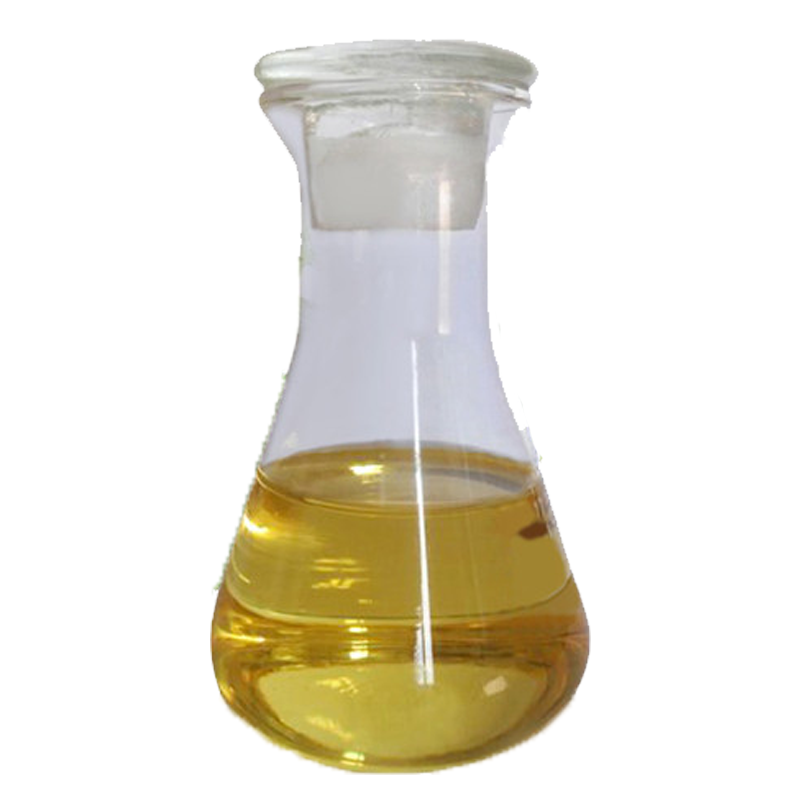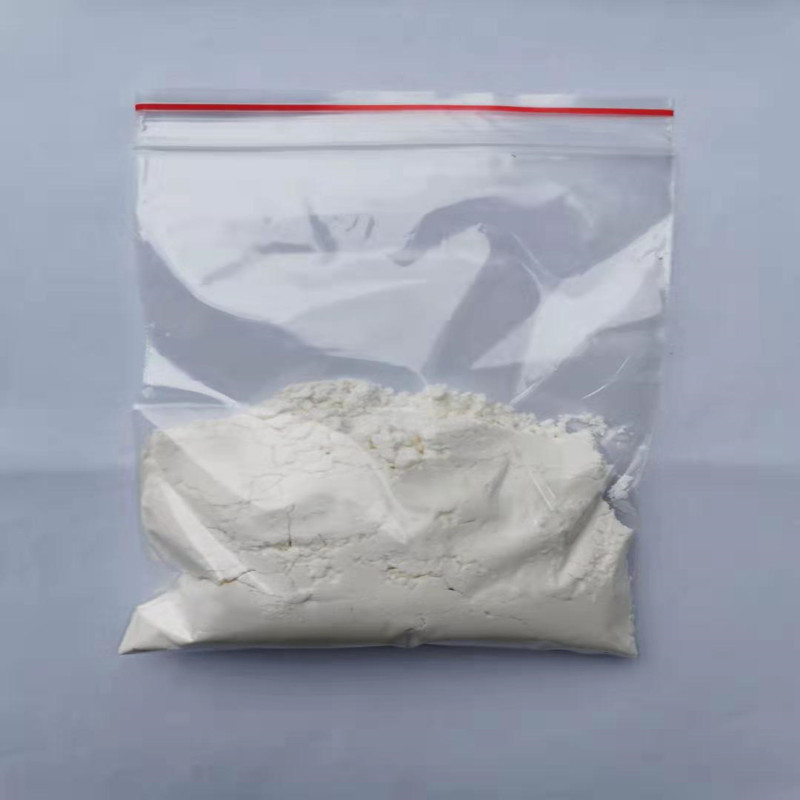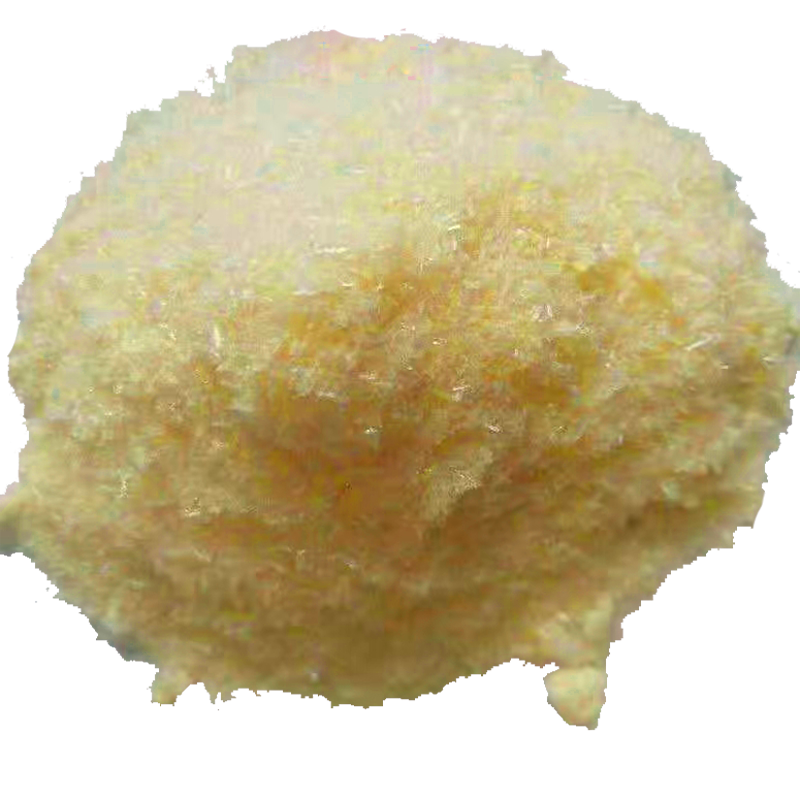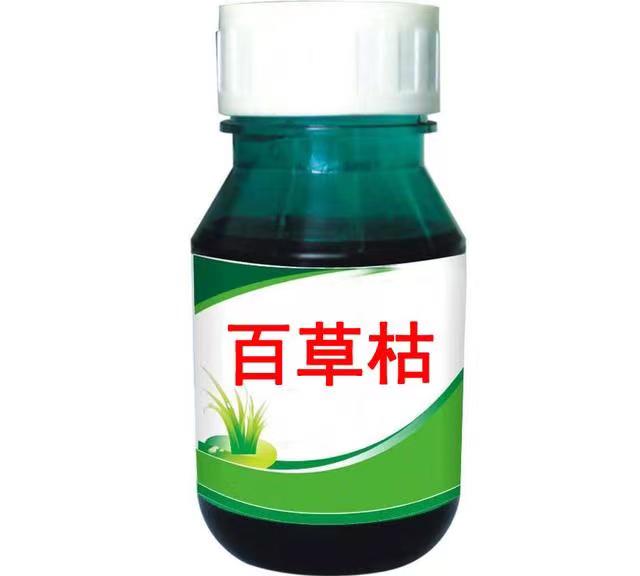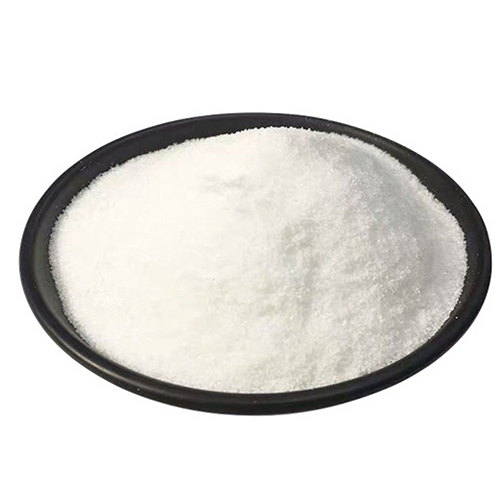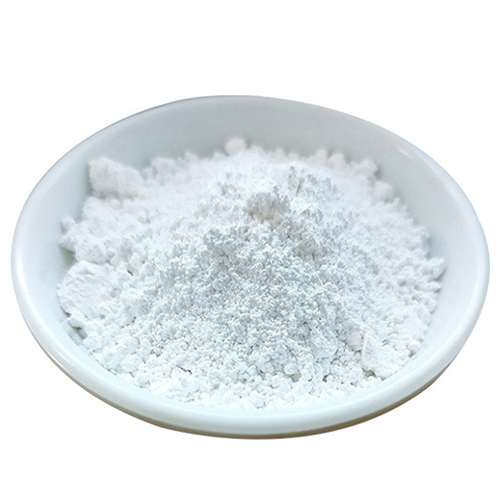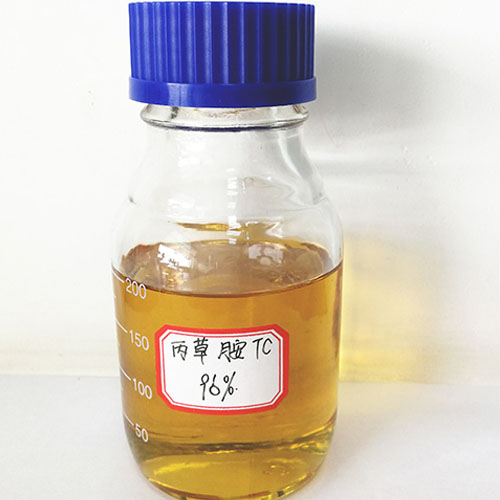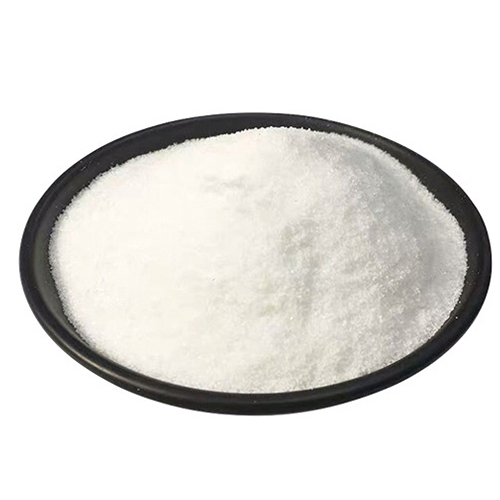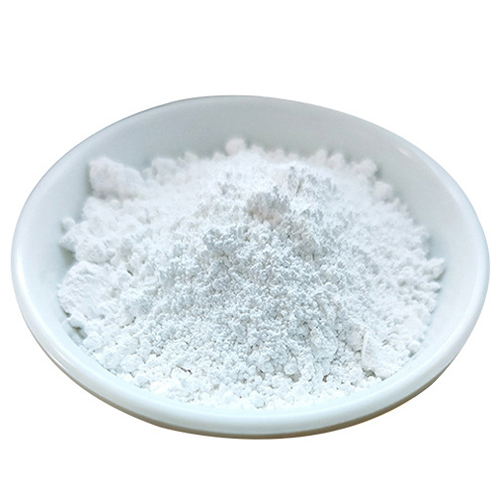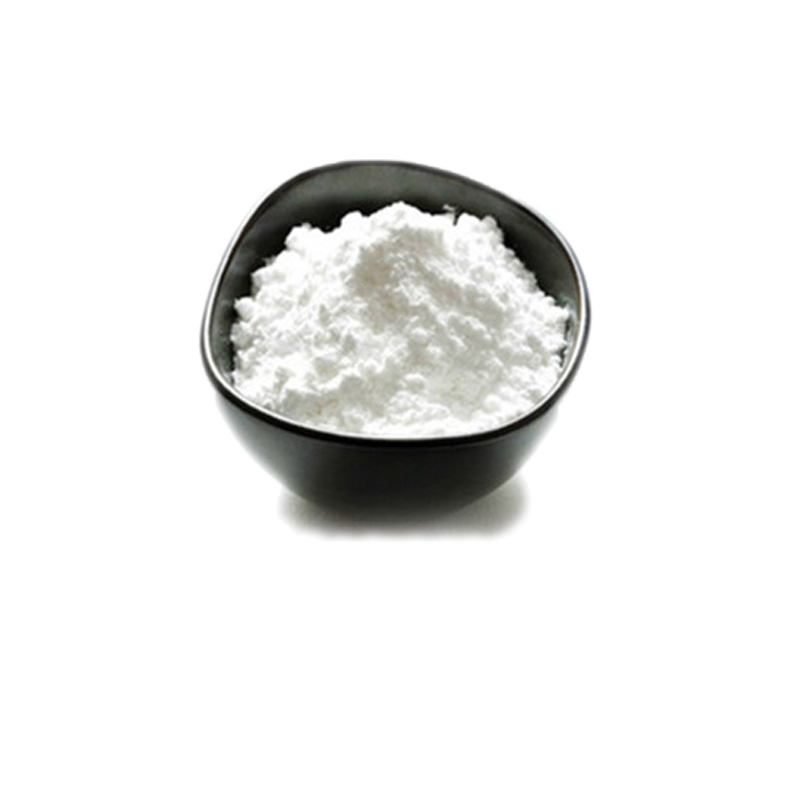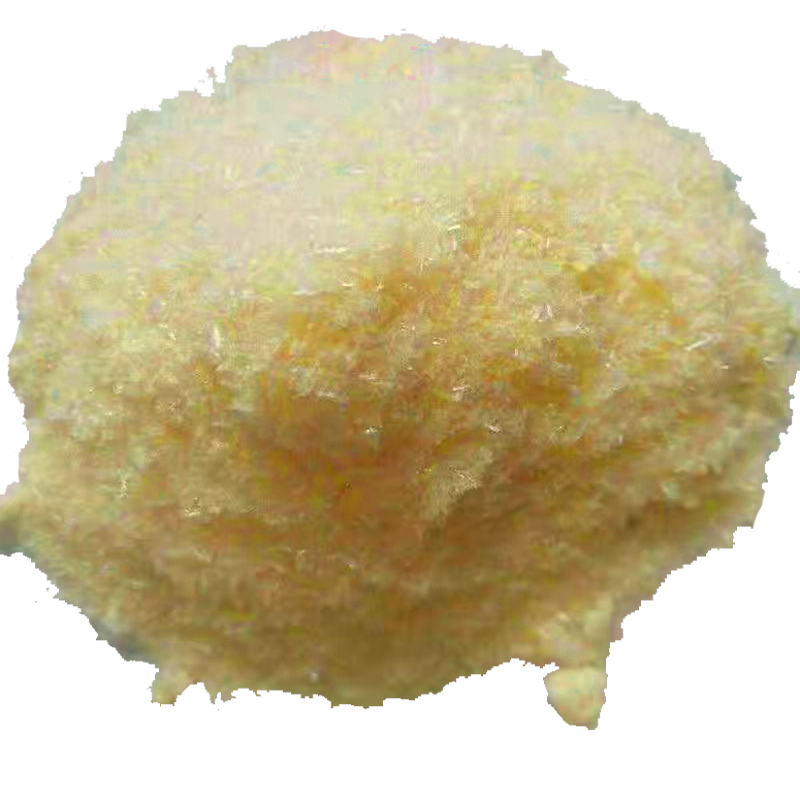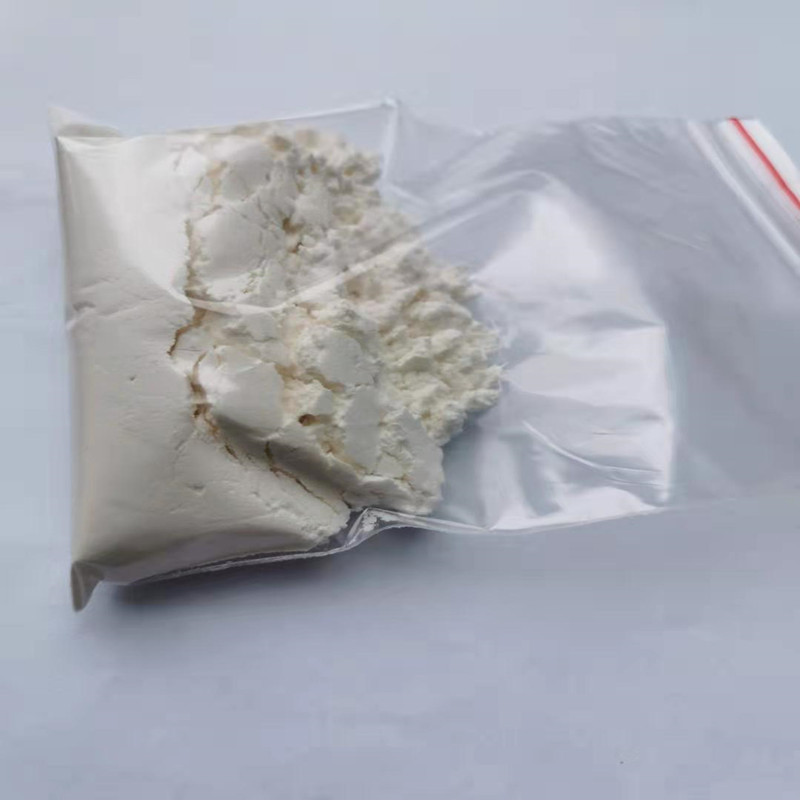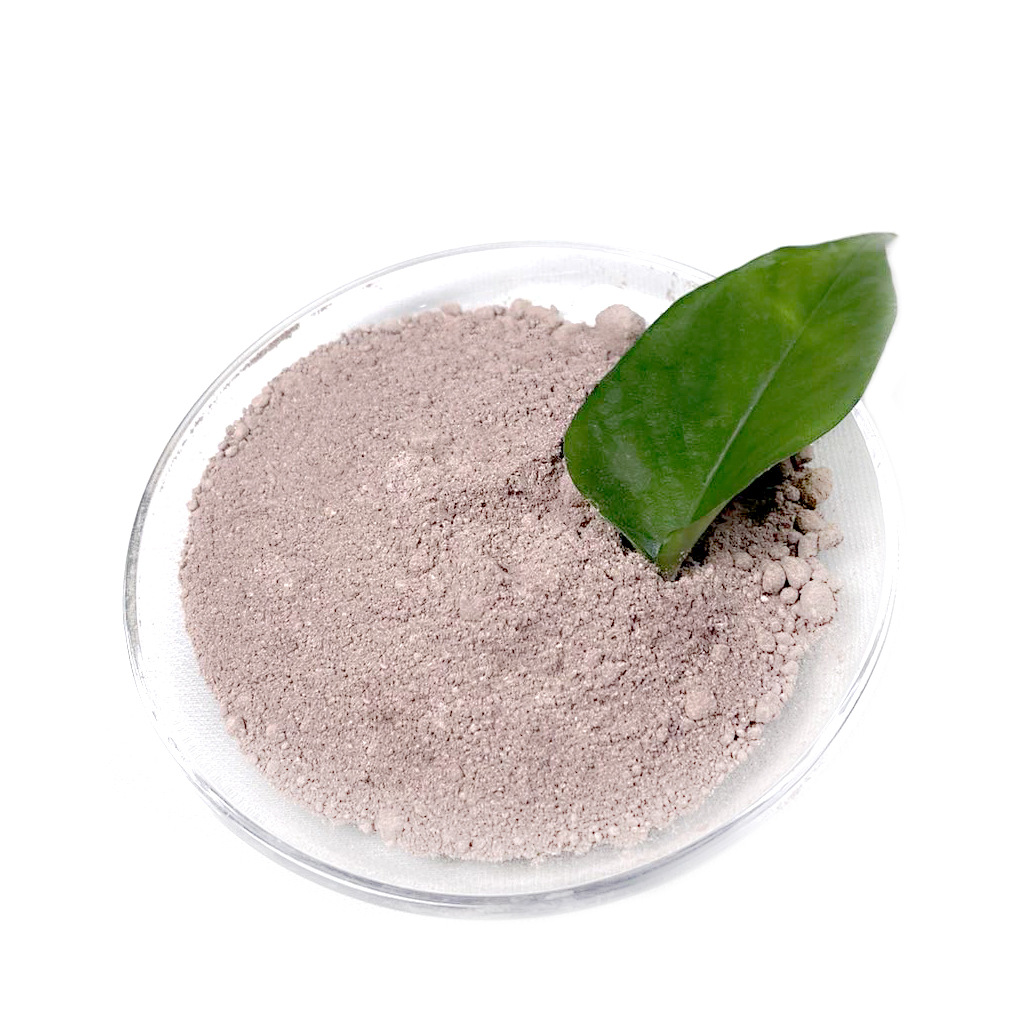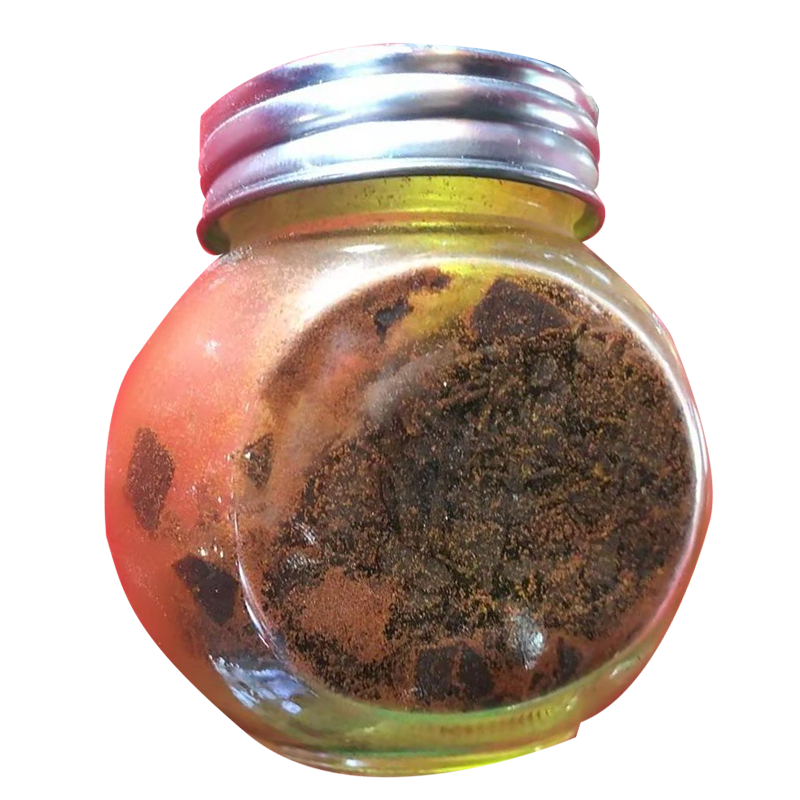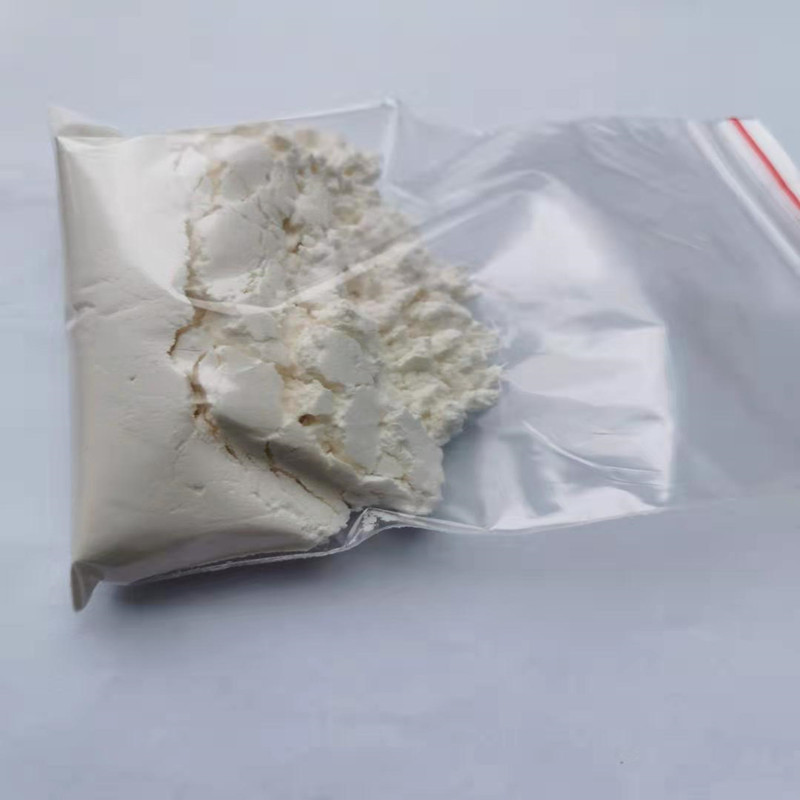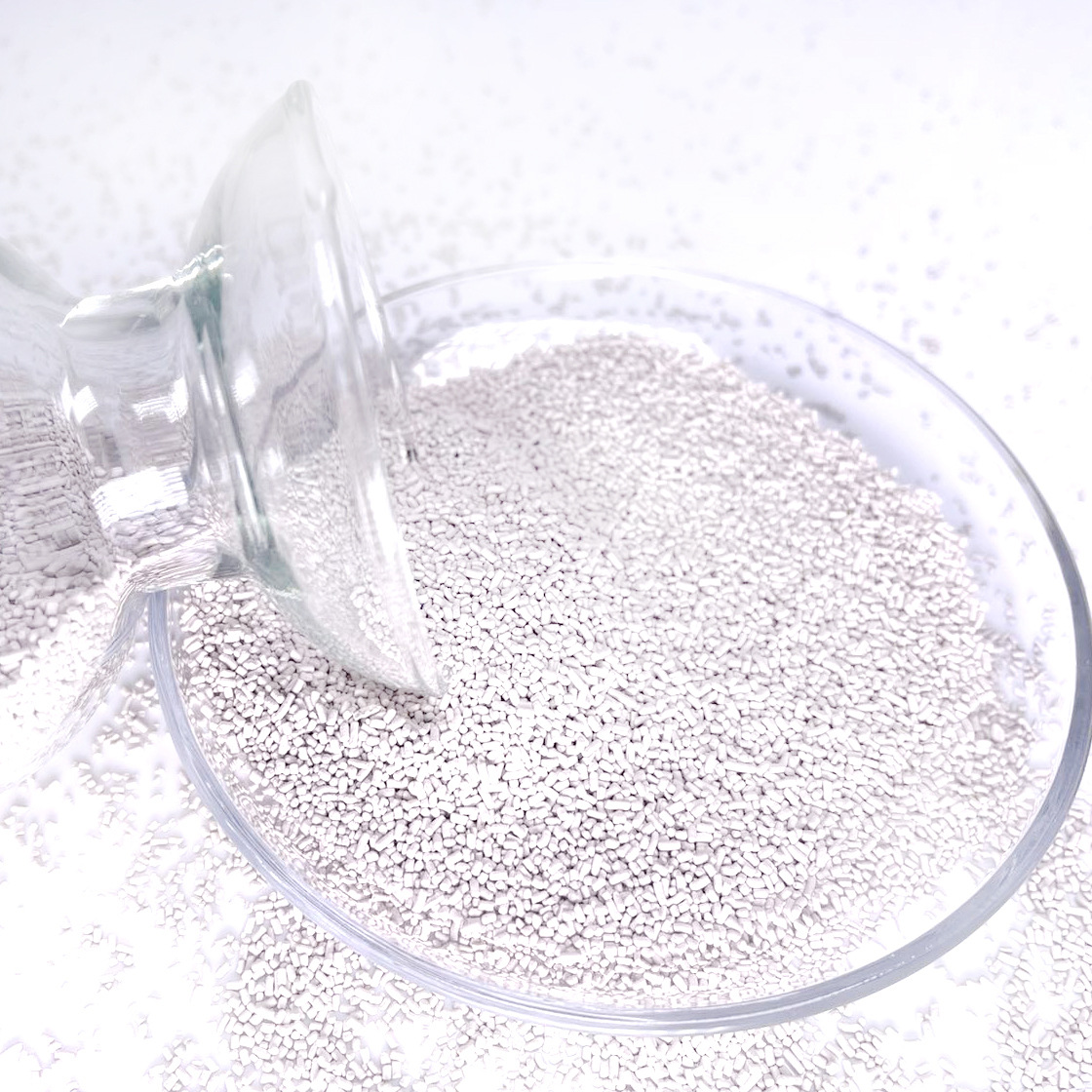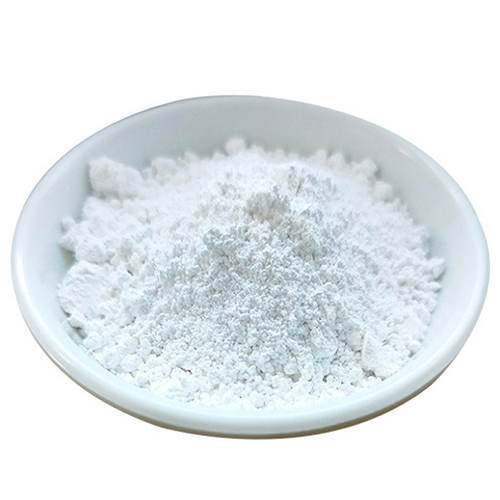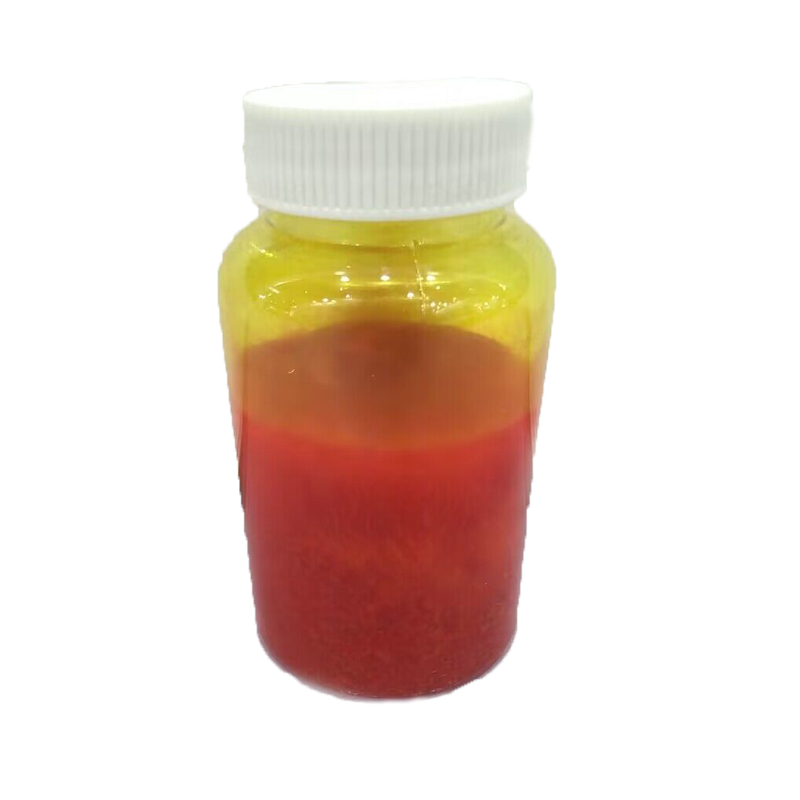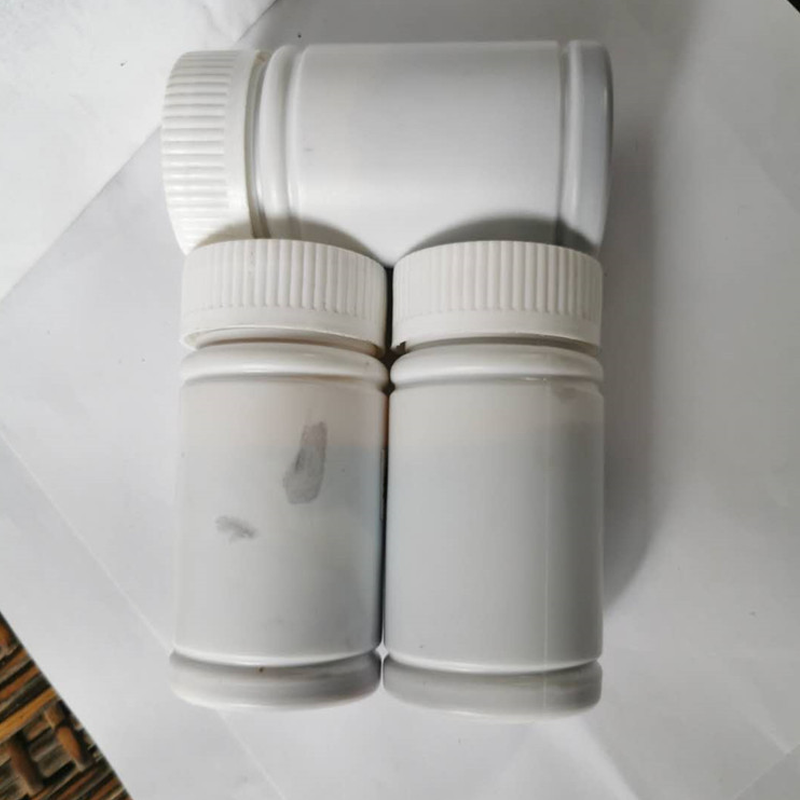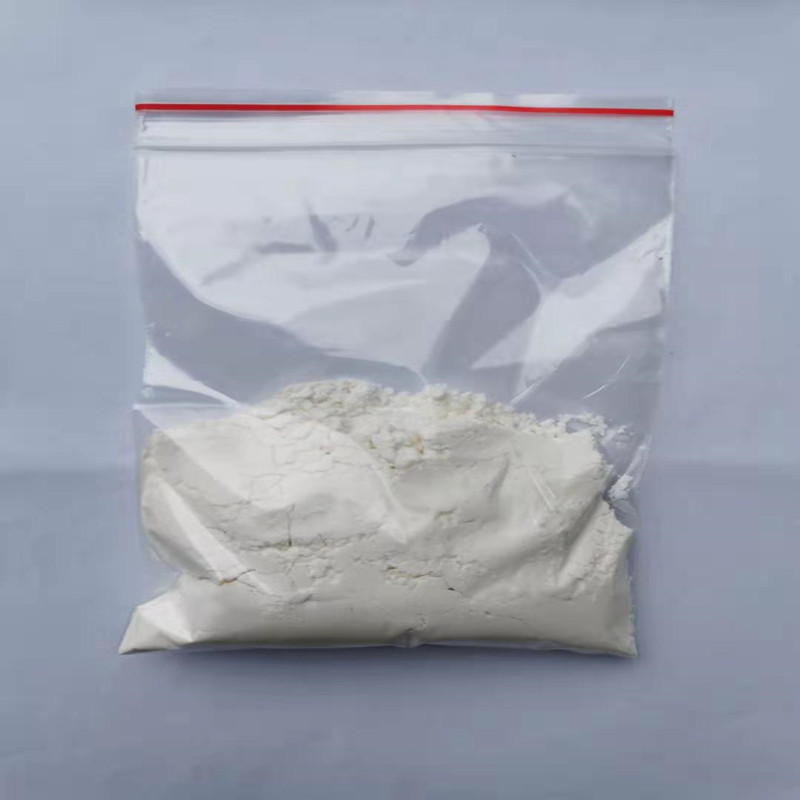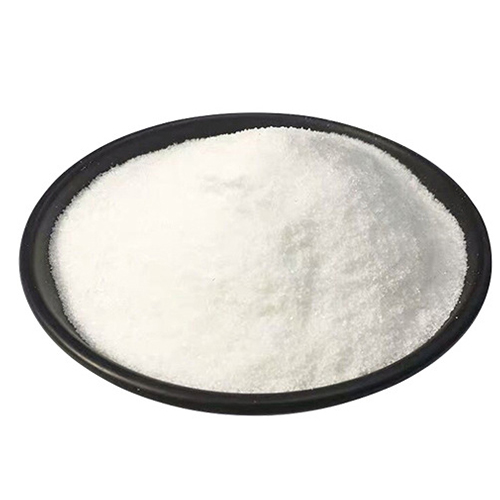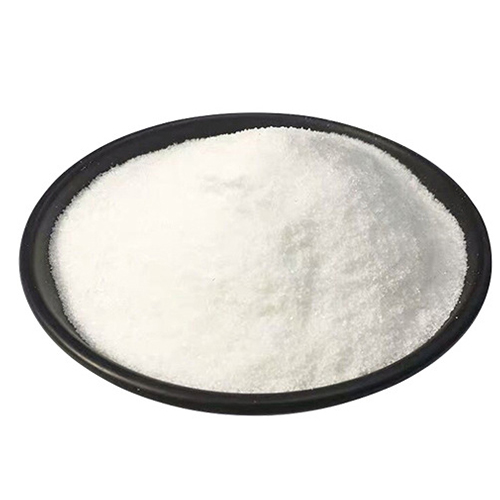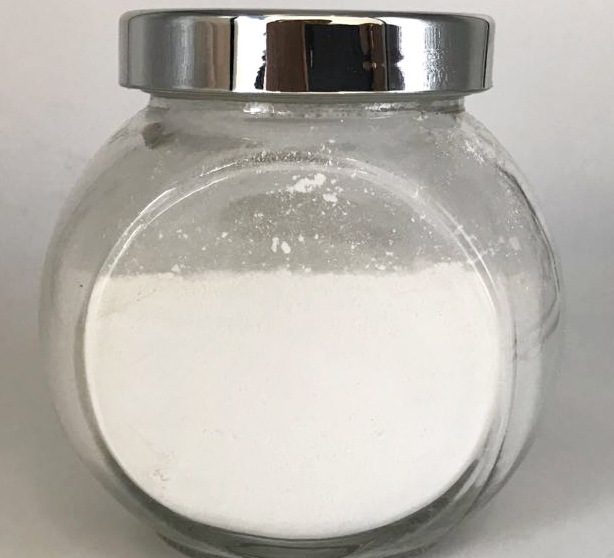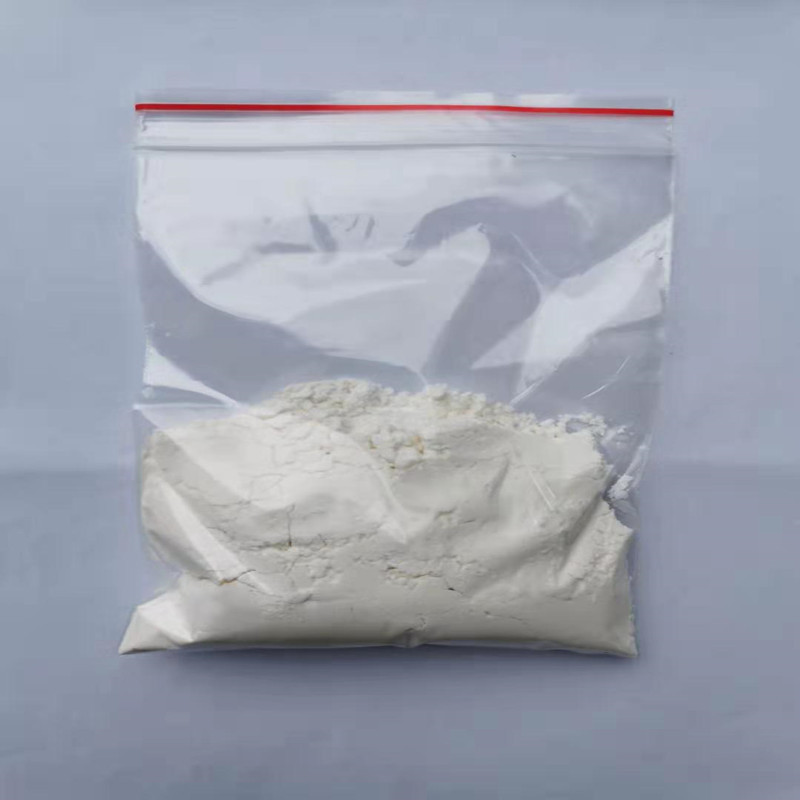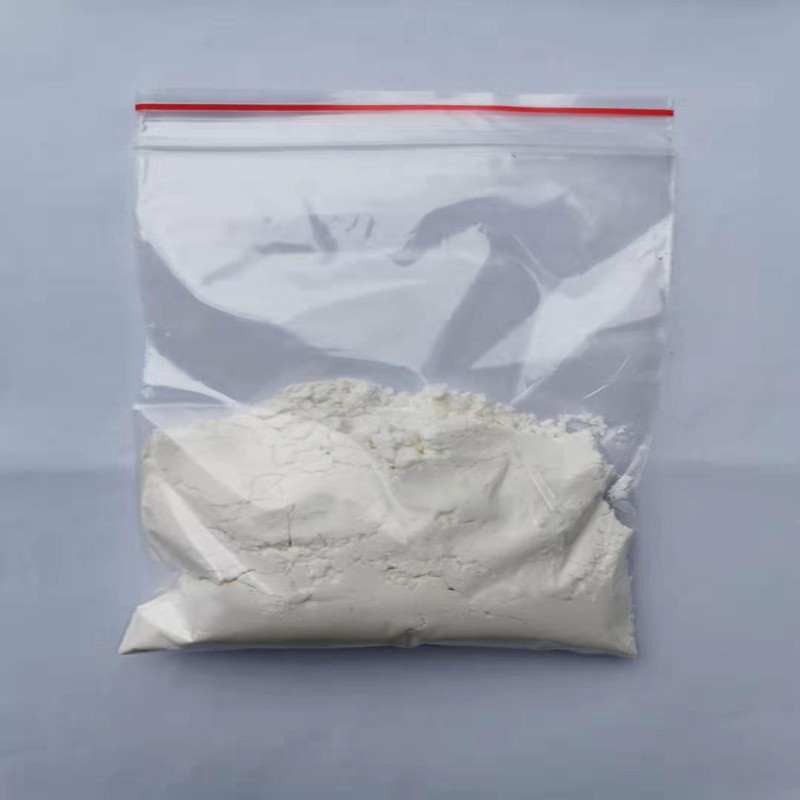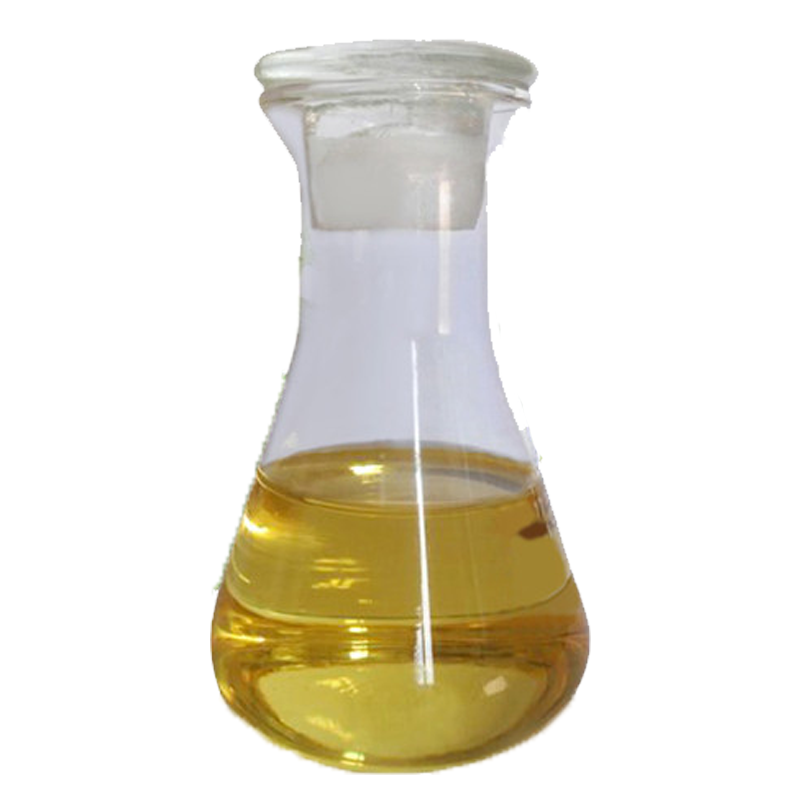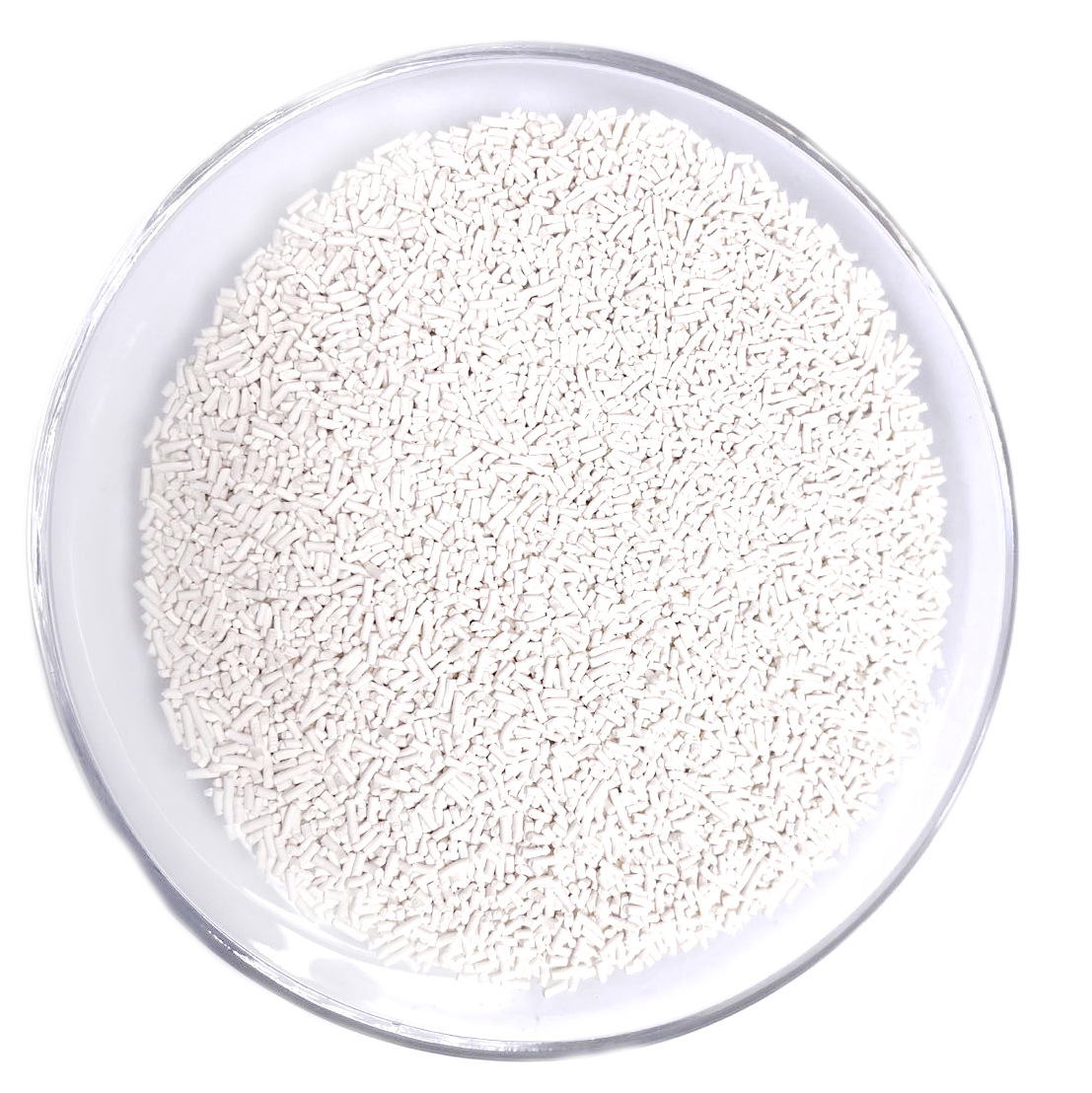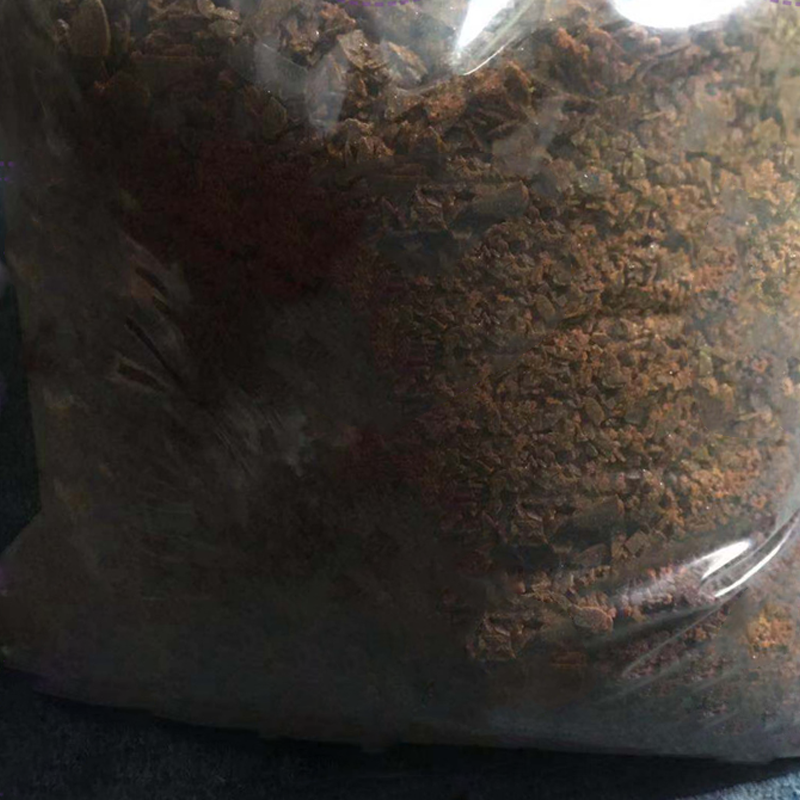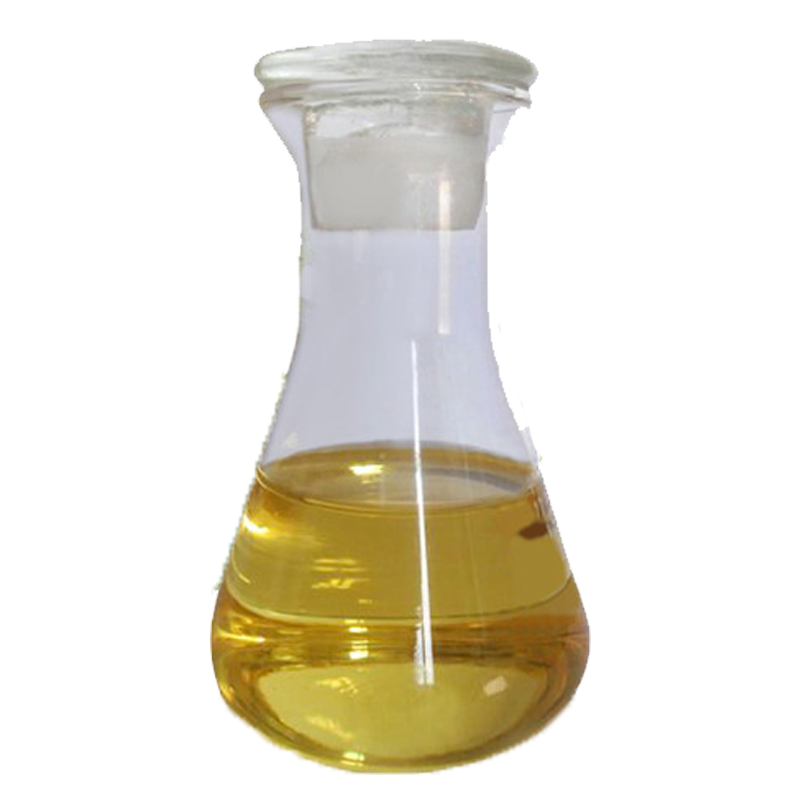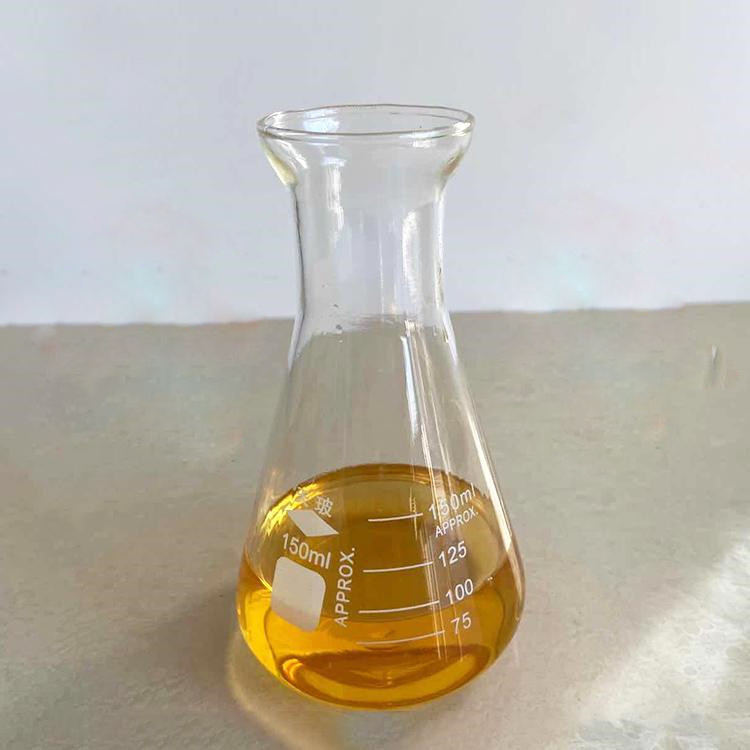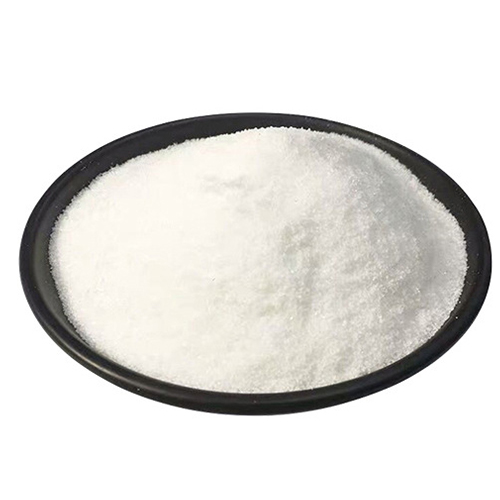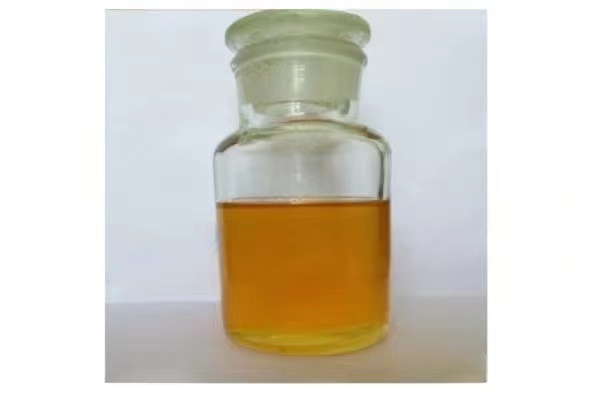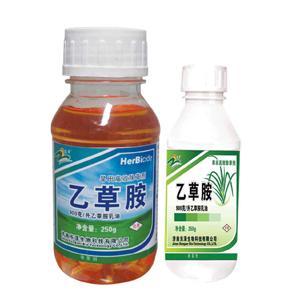
Herbicide Acetochlor Cas 34256-82-1
Acetochlor is a member of the aniline herbicides that blocks the gibberellin pathway. It has a higher risk of environmental pollution.
CasNo: 34256-82-1
Formula:C14H20ClNO2S
Physical State:liquid
Purity(%): 100FOLD
Application: Agricultura
Color: light browm
Formulation:50% 90%EC and used to manufacturer more formulated product
- Category: Herbicide
Acetochlor is a selective pre-emergence treatment herbicide, which is mainly absorbed by the coleoptile of monocotyledon or hypocotyl of dicotyledon, and then conducts upward after absorption, mainly inhibiting cell growth by hindering protein synthesis, so that weed sprouts , Young root growth stops, and then dies. The ability of grass weeds to absorb acetochlor is stronger than that of broad-leaved weeds, so the effect of controlling grass weeds is better than that of broad-leaved weeds. The duration of acetochlor in the soil is about 45 days, and it is mainly degraded by microorganisms. It has little mobility in the soil and is mainly kept in the 0-3 cm soil layer.
Features of Acetochlor
Acetochlor has the advantages of high herbicidal activity, wide application range, safety to crops, less harsh application conditions, stable product quality, and low price, and is widely used for pre-emergence control of weeds in upland fields. Acetochlor can control annual grass weeds and certain annual broadleaf weeds, and is suitable for weeding in corn, cotton, peanut and soybean fields. Acetochlor can be absorbed by young shoots and roots of weeds, inhibiting their protein synthesis and causing them to die.
Acetochlor is a pre-emergence herbicide after sowing. It has special effects on the control of annual grass weeds. After the drug is absorbed, it spreads in the plant and mainly accumulates in the vegetative organs of the plant, inhibiting the transportation of nutrients, thereby inhibiting the growth of young shoots and weeds. Root growth, key symptoms mainly appear in the budding and seedling stages of crops, resulting in dwarfing, deformity and death of young shoots.
The validity period is 40-70 days. It is mainly kept in the soil layer of 0-3cm. Under high temperature and high humidity, or under low temperature and high humidity after treatment, it is easy to cause phytotoxicity, but generally it can return to normal after 10-15 days. Pesticide application 24 to 72 hours after sowing is prone to phytotoxicity. The main part of weed absorption is the bud, so the pesticide must be applied before the weed emerges.
Applications of Acetochlor
Amide selective, pre-emergence herbicide, can be used in corn, cotton, soybean, peanut, rapeseed, potato, sugarcane, sesame, sunflower and leguminous, cruciferous, solanaceous, asteraceae, umbelliferous, etc. Vegetable fields and orchards are used to prevent and control annual grass weeds. One application of pesticide can control the whole growth period of crops without weed damage. Not effective against perennial weeds.
This product is a selective upland pre-emergent herbicide, which lasts for more than 8 weeks in the soil, and one application can control the whole growth period of crops without weed damage. It can be used in peanut, corn, soybean, cotton, rapeseed, sesame, potato, sugarcane, sunflower, orchard and leguminous, cruciferous, solanaceous, compositae and umbelliferous and other vegetable fields to control annual grass weeds . Not effective against perennial weeds.
It is a pre-emergence herbicide, which can control annual grass weeds and some annual broadleaf weeds, and is suitable for weeding in corn, cotton, peanut and soybean fields.
How to use acetochlor
When the corn, soybeans, peanuts, etc. have all seedlings, combined with the thinning and leaving the seedlings, hoe quickly and lightly, and then spray 150ml of acetochlor per mu and spray 90 catties of water. It takes about 30 days from sowing to seedling hoeing. At this time, the weather is dry and rainy, and weeds are scarce. Broad-leaved weeds such as quinoa and amaranthus invertebrates germinate intensively, which is easy to remove and saves labor.
Since the spraying was postponed for more than 30 days, the efficacy of the pesticide was postponed accordingly. By the effective period, the crops had been closed and the ridges had grown tightly. In this way, the time difference spraying is not only labor-saving and efficient, but also increases production, which serves multiple purposes.
Acetochlor Herbicide Precautions
Due to the change of planting structure, the dryland crops in our city expanded rapidly, and the application area of the dryland herbicide - acetochlor on corn, peanuts, panru, green beans and other crops also increased rapidly. In the process of using some farmers, the weeding effect is not good due to improper use methods, and even the phenomenon of phytotoxicity continues. For this reason, the following points should be paid attention to when using this herbicide to kill weeds:
1. Soil moisture The effect of acetochlor on weeds is mainly through the absorption of weed shoots and young roots, inhibiting the growth of young shoots and young roots, stimulating roots to produce nodular deformities, and causing weeds to die. Certain soil moisture is conducive to improving the weed killing effect. If there is continuous dry weather during the application stage, the weeding effect will be greatly reduced. Therefore, watering first to increase soil moisture, and then using medication is one of the key measures to improve the efficacy of acetochlor.
2. Medication time Acetochlor is a selective pre-emergent herbicide. It can exert its medicinal effect only after the crops are sown and before the weeds emerge, and the earlier the application time, the better. Basically ineffective.
3. Quality of soil preparation The quality of soil preparation is directly related to the efficacy of acetochlor. The quality of soil preparation is not good, and the old grass has not been eradicated, which directly affects the weeding effect, because acetochlor can only be absorbed by the young shoots and young roots of the weeds, and has no control effect on the established weeds. On the other hand, the quality of land preparation is not good, the soil is uneven, and the liquid medicine cannot be sprayed evenly, which affects the improvement of weeding effect.
4. The problem of phytotoxicity Acetochlor herbicide is prohibited to be used on sensitive crops such as cucumber, rice, spinach, wheat, leek, millet, sorghum, etc. The dosage per mu is limited to 50-75 ml, otherwise it is easy to be injured.
Package of Acetochlor
We also supply some accessories to add more functions for end-users' convenience, which also help our distributors and business partners sell our products in their area. Any special package requirements, please don't be hesitate to tell us.
Large Package:
Solid: 25Kg UN approved fiber drums with LDPE liner;
Liquid: 200L UN approved HDPE or iron drums.
Retail Package:
Solid: 10g;50g;100g;500g;1kg;5kg;25kg
Suppliers OF Acetochlor
Agripestcide is a professional agrochemical chemical manufacturer supplying good and effective acetochlor with high quality and good service. If you are looking for acetochlor in bulk, please feel free to contact us for the latest price.
Name | Acetochlor |
Formula | C14H20ClNO2 |
Molecular Weight | 269.77 |
EINECS N0. | 251-899-3 |
Melting Point | <0°C |
Boiling Point | bp0.4 torr 134° |
Physical State | crystallize |
Color | liquid |
Purity | 100FOLD |
Package | 25kg Cardboard barrel |
Application | Agricultural |
Storage | Ventilation low temperature drying |
Sample | Available |
EXP | 2 years |
Send an Inquiry
Your email address will not published. Required fieled are marked.
Related Products
Check out other related Products

